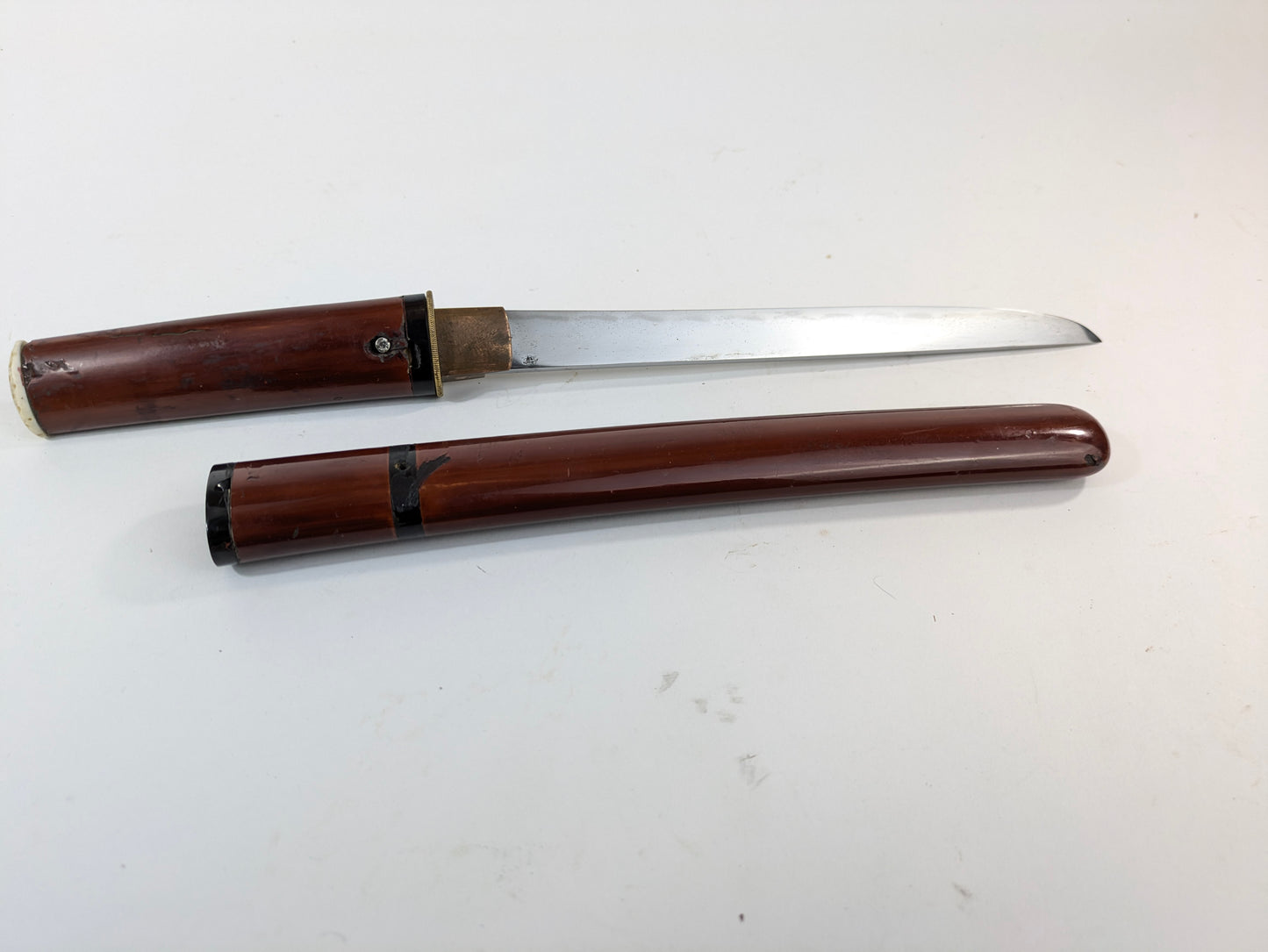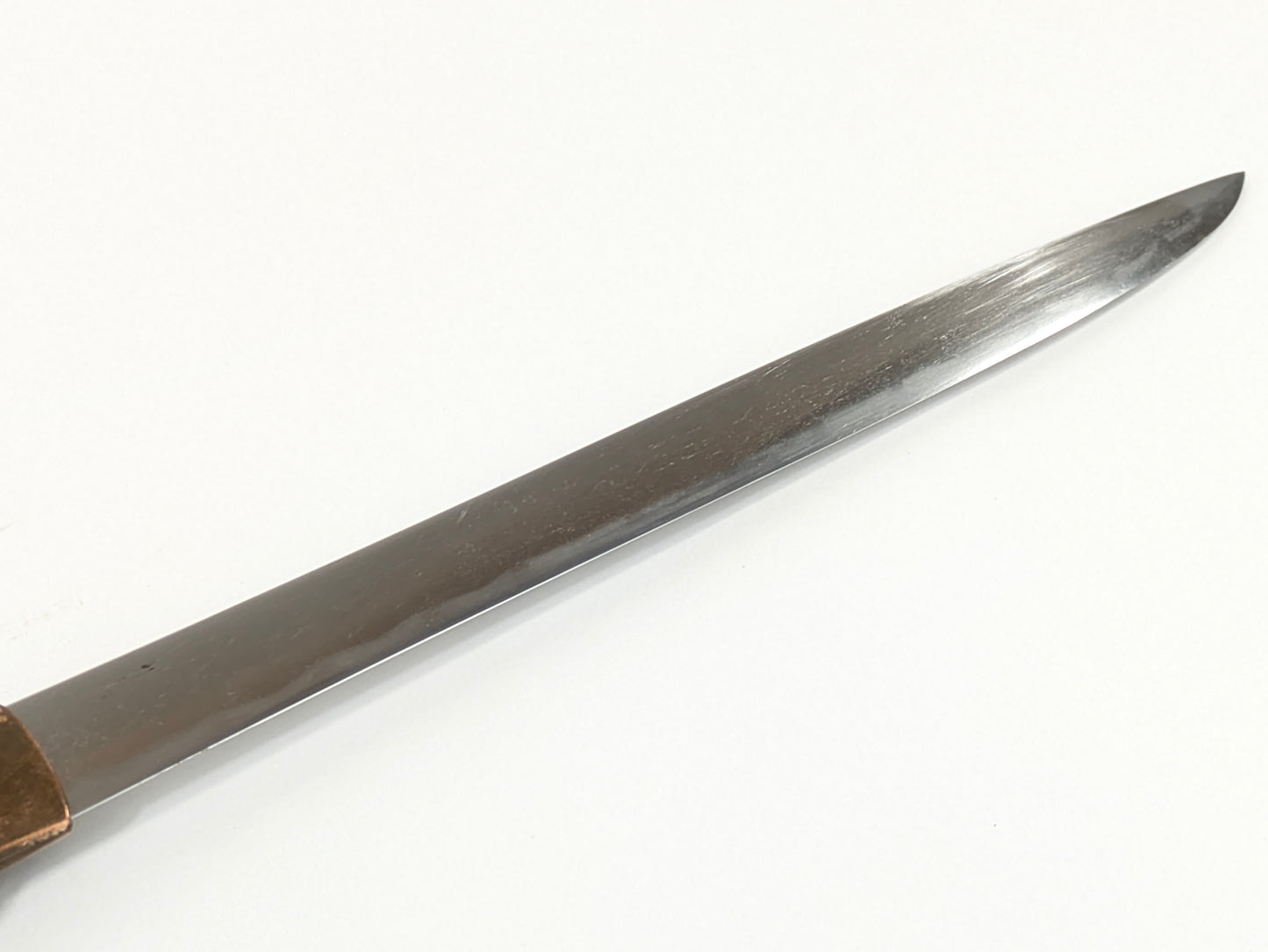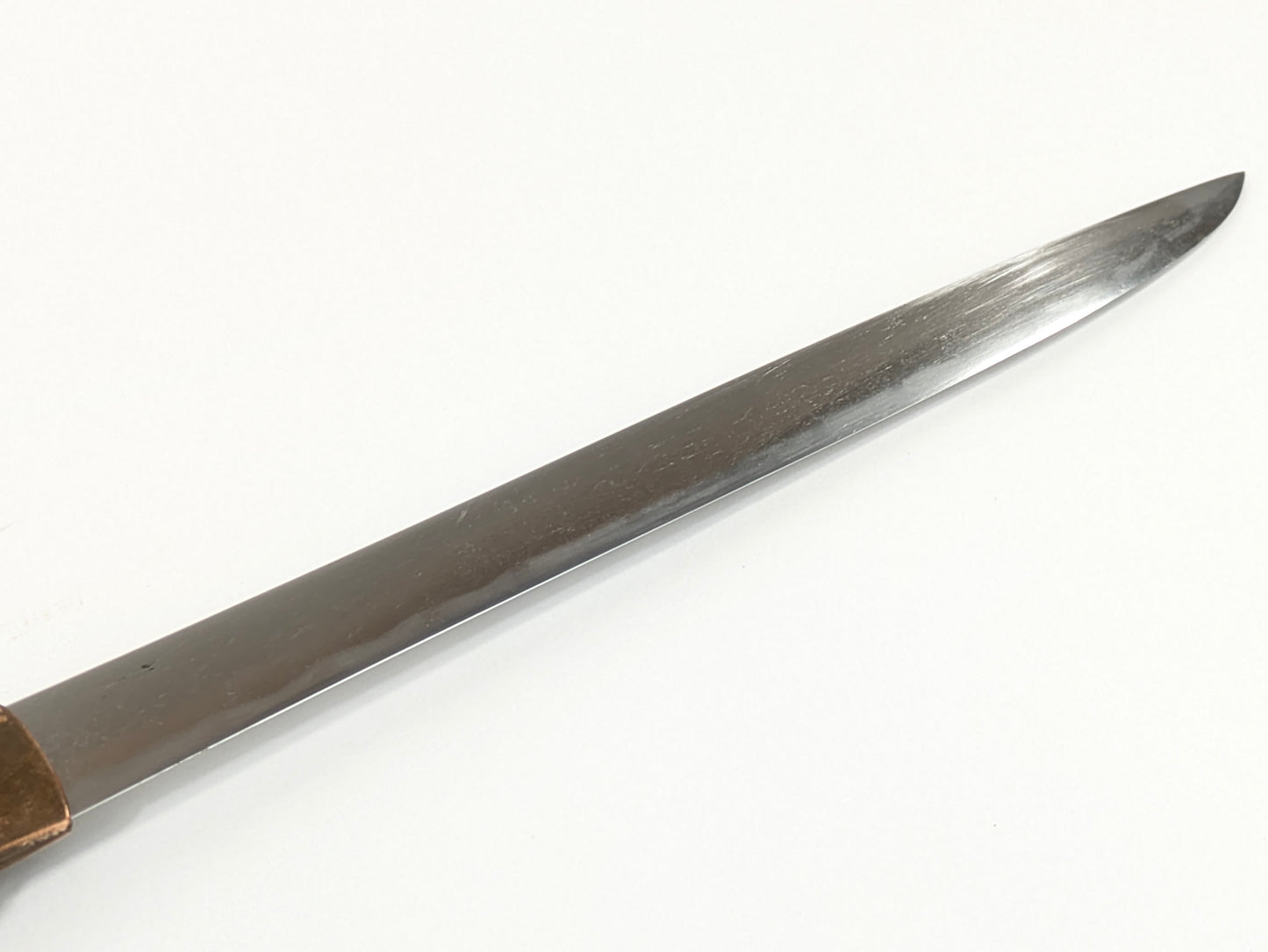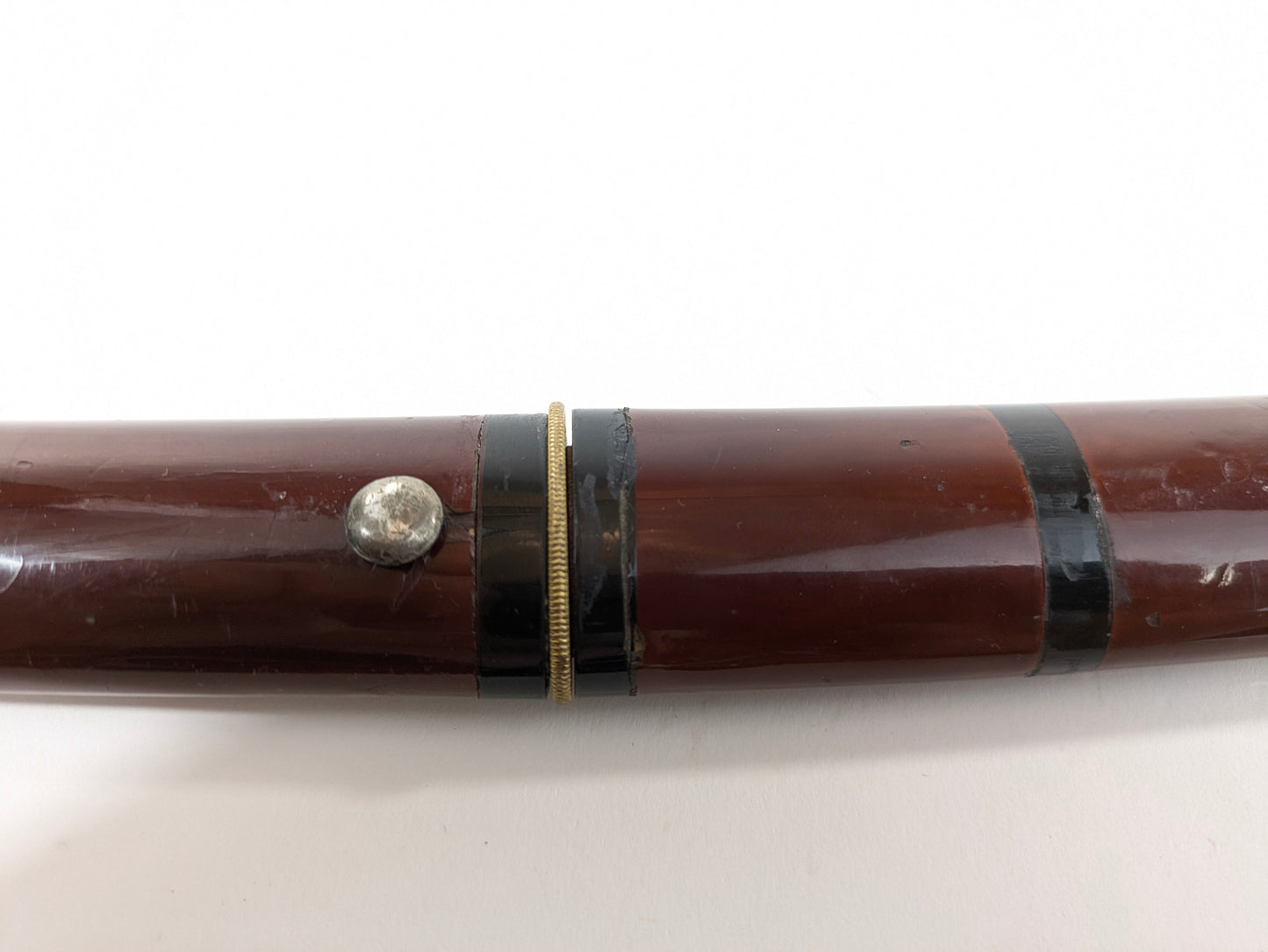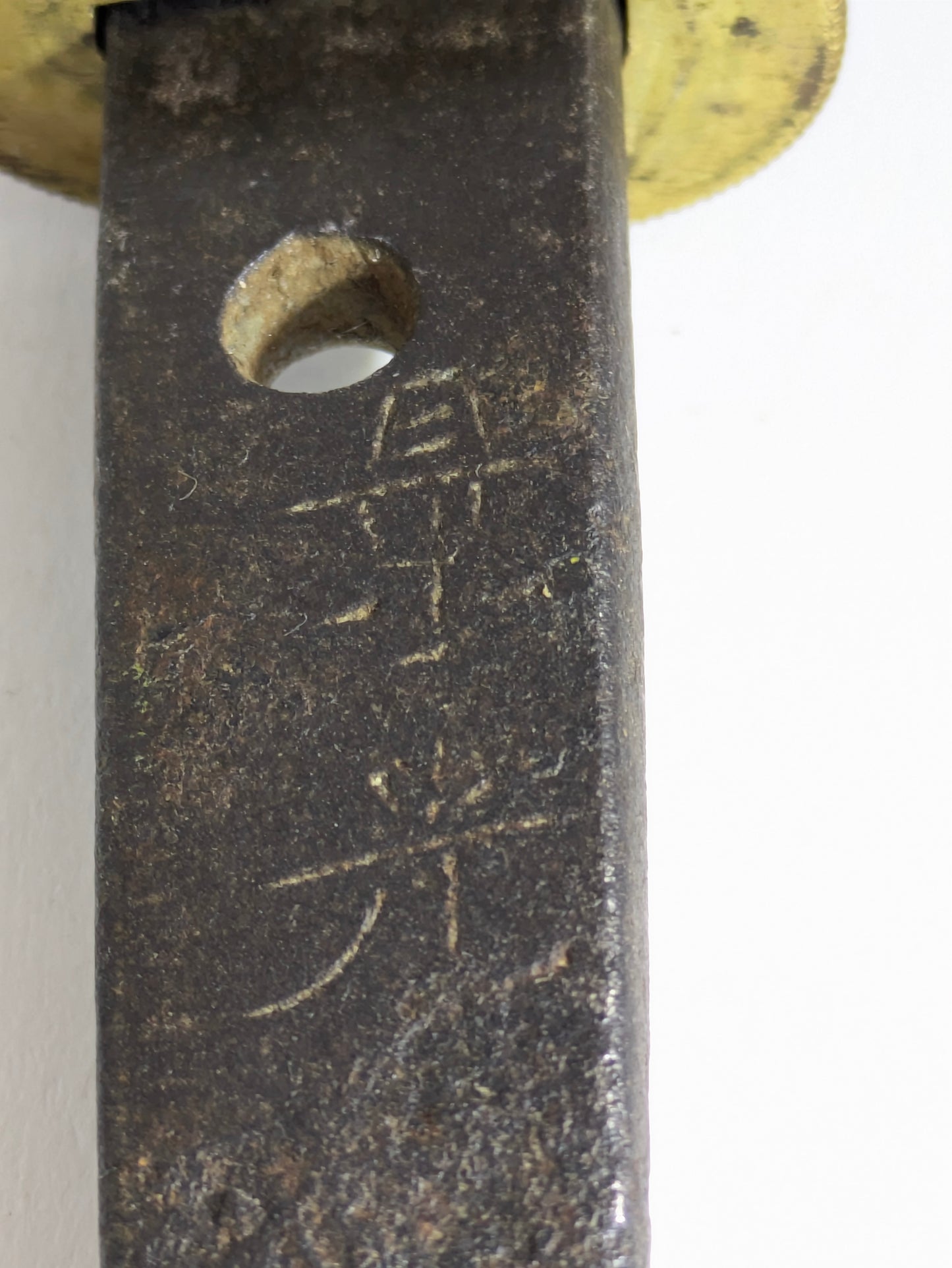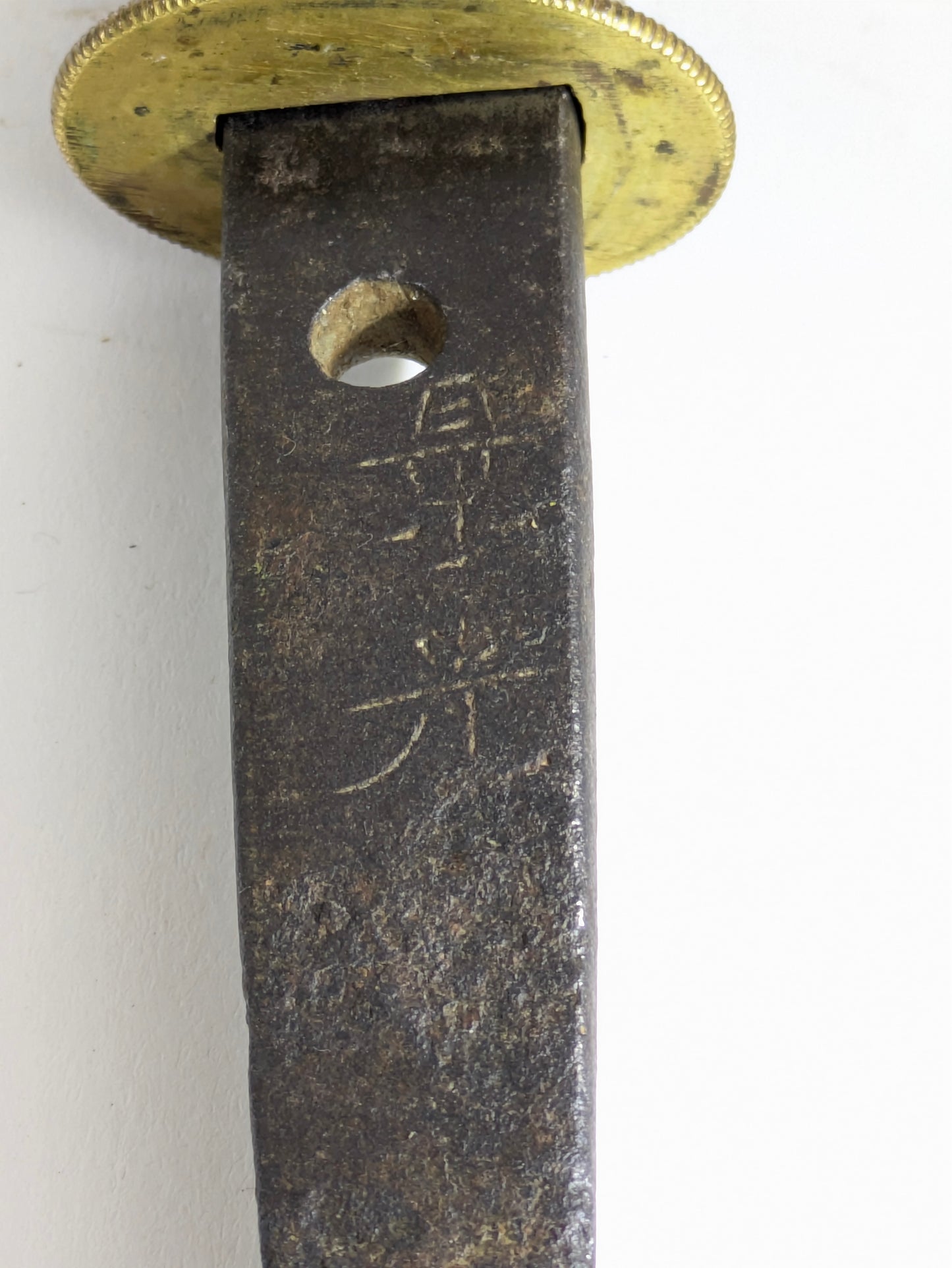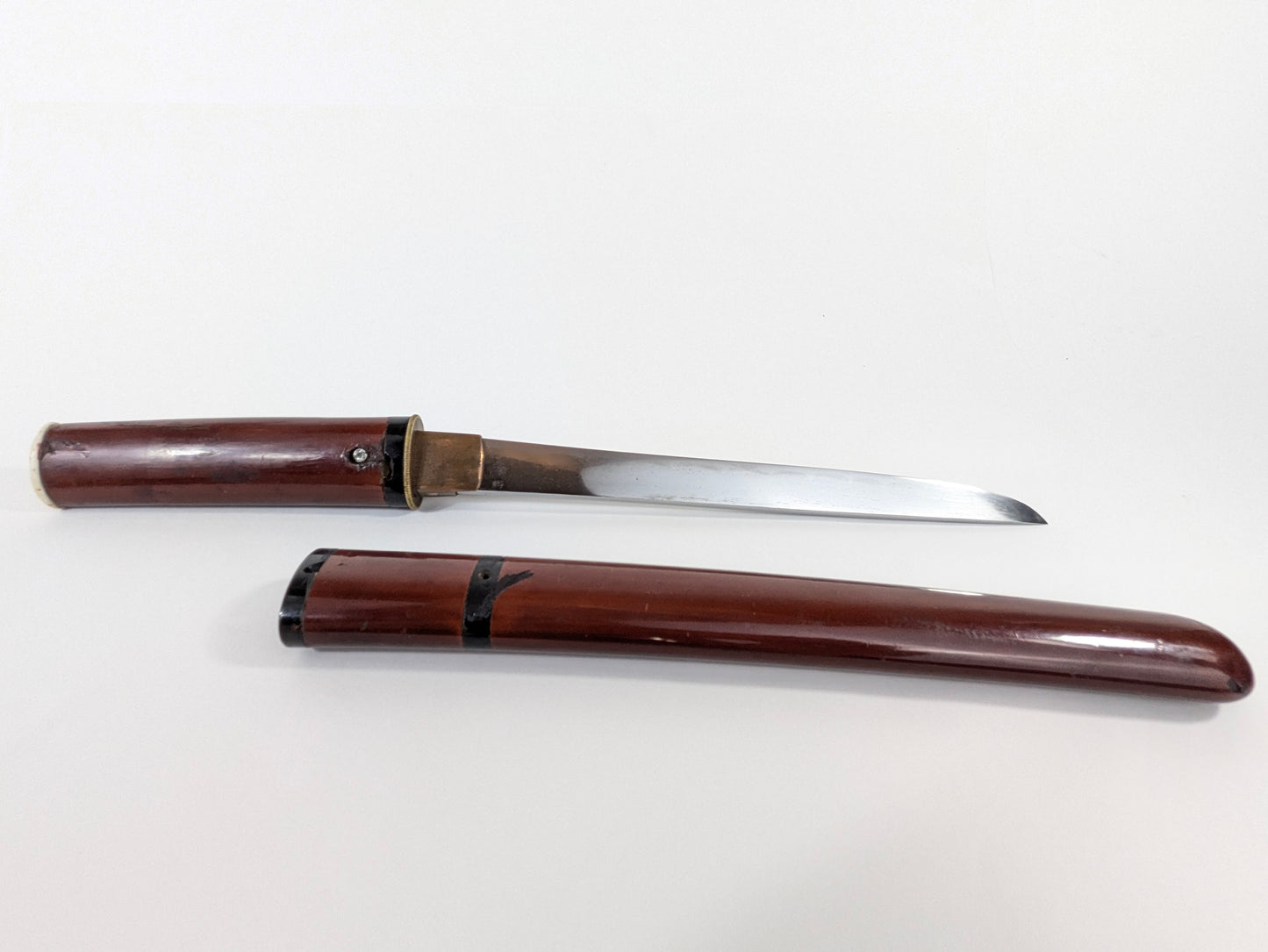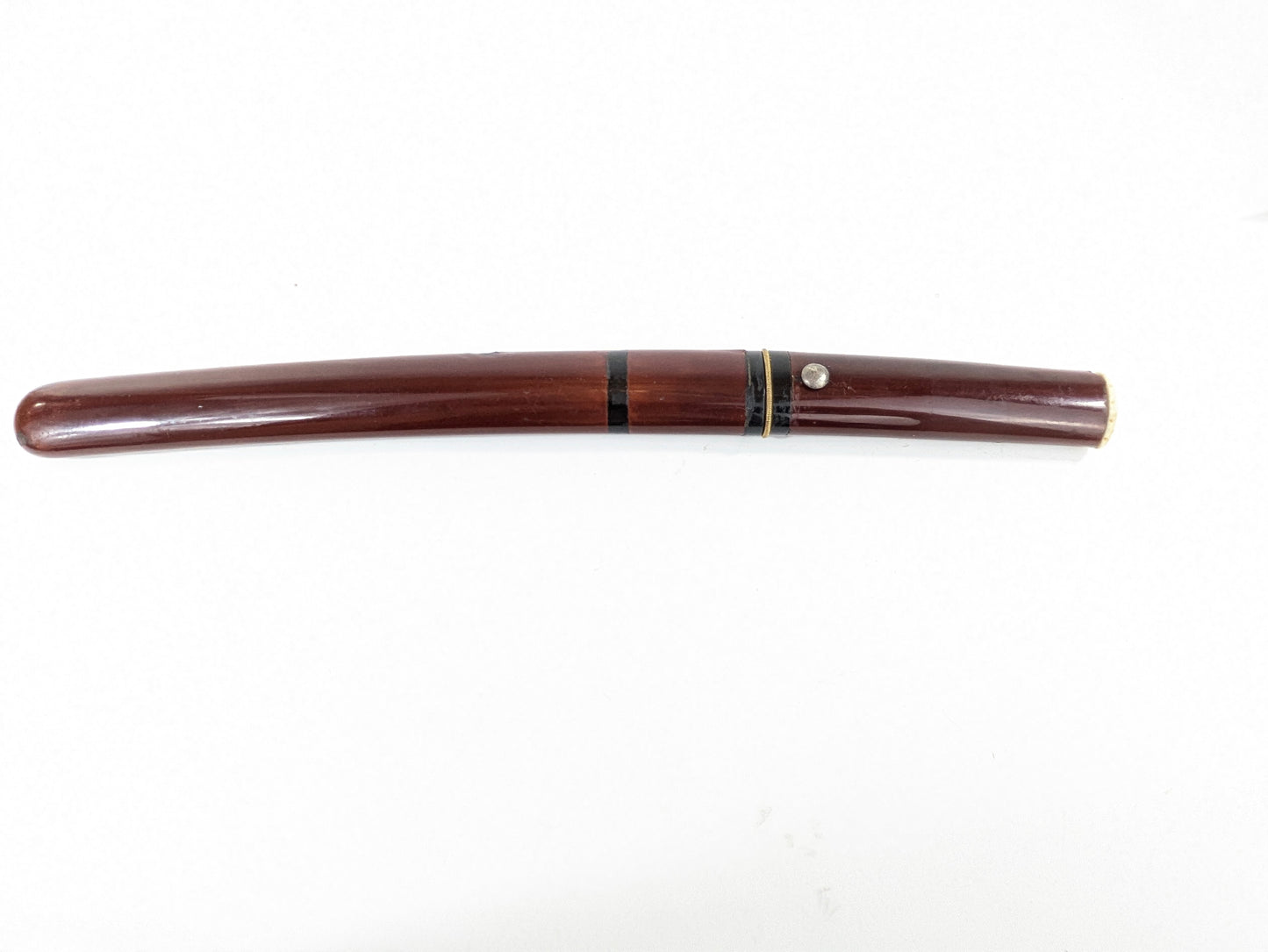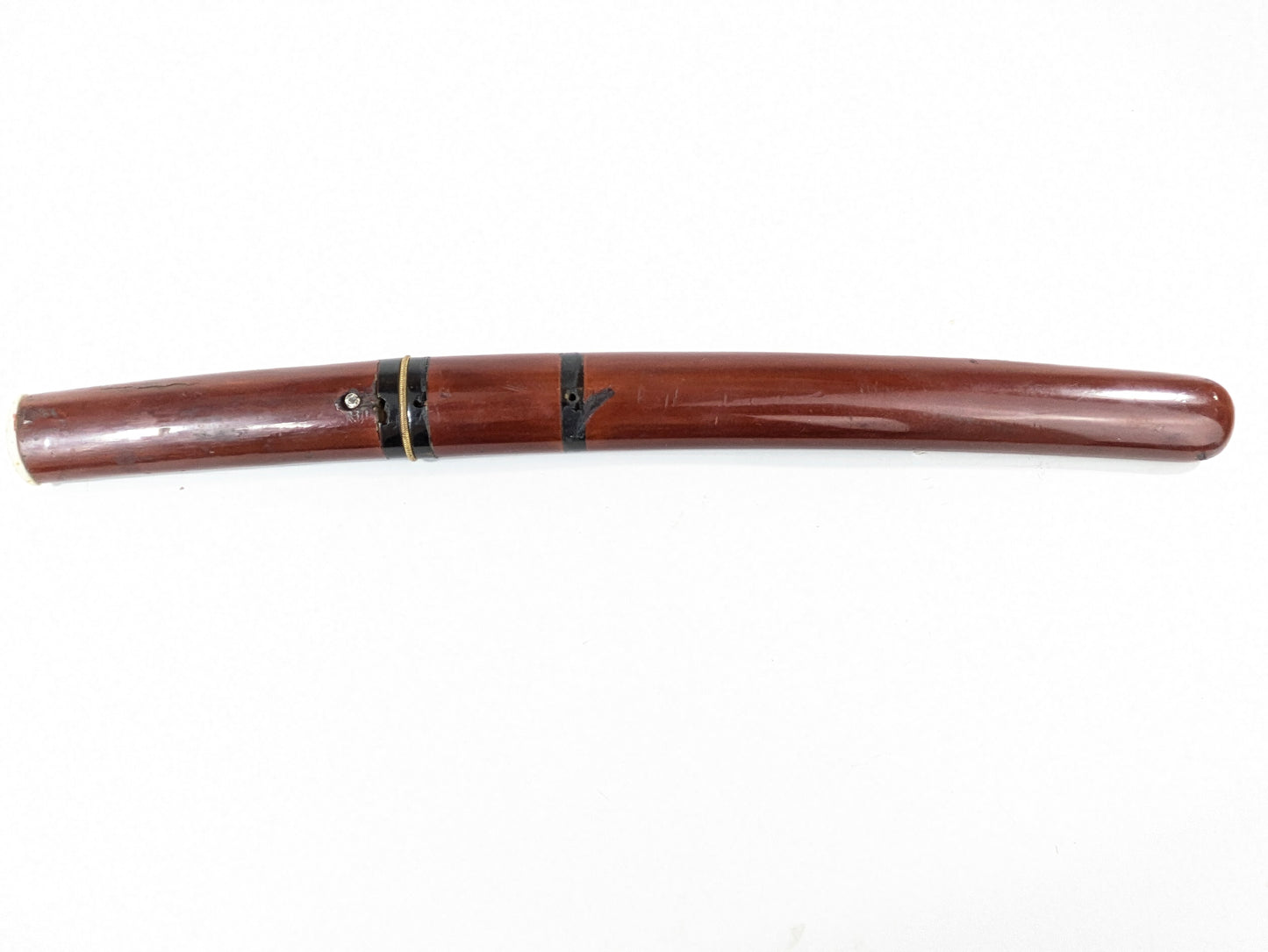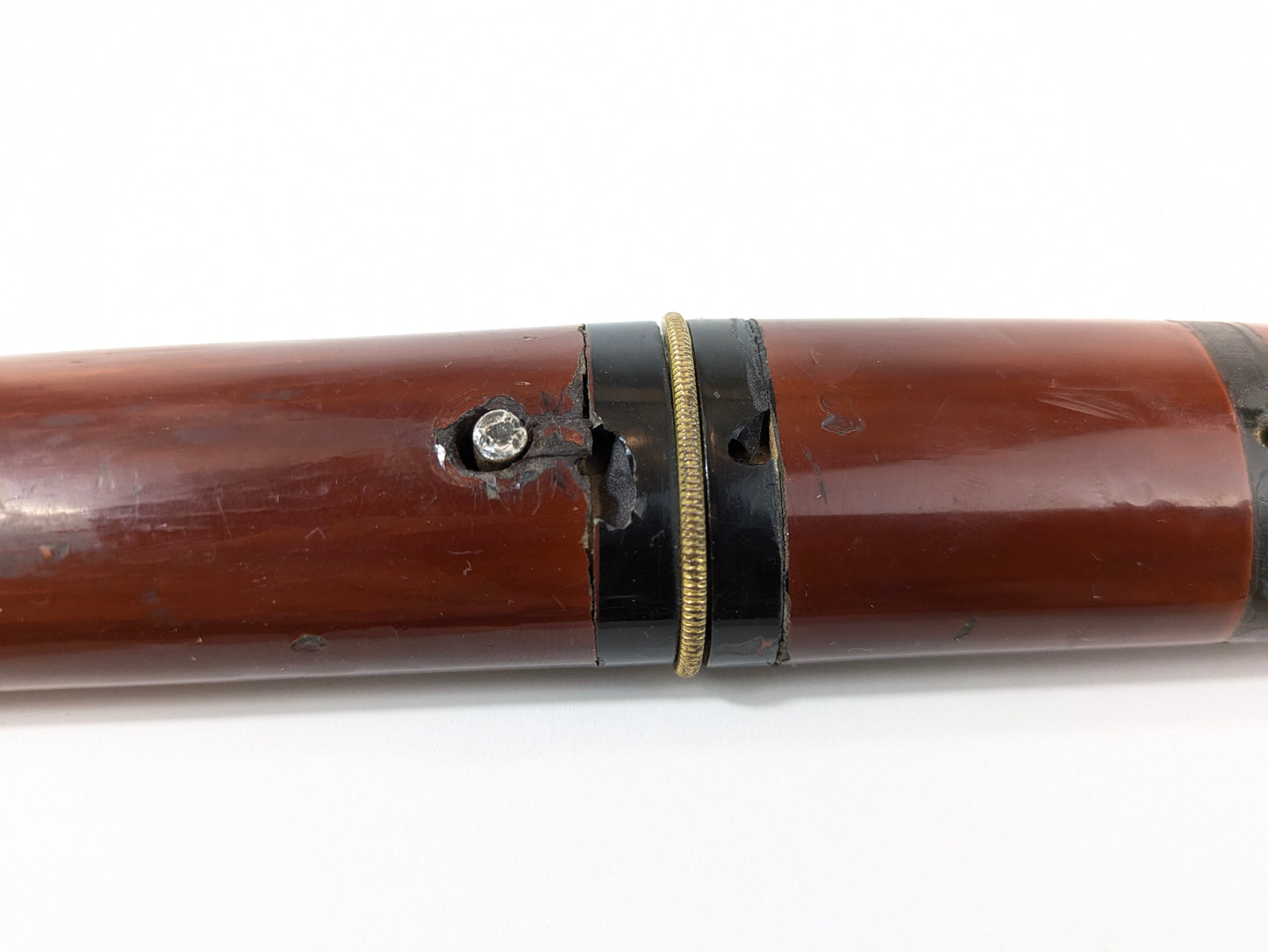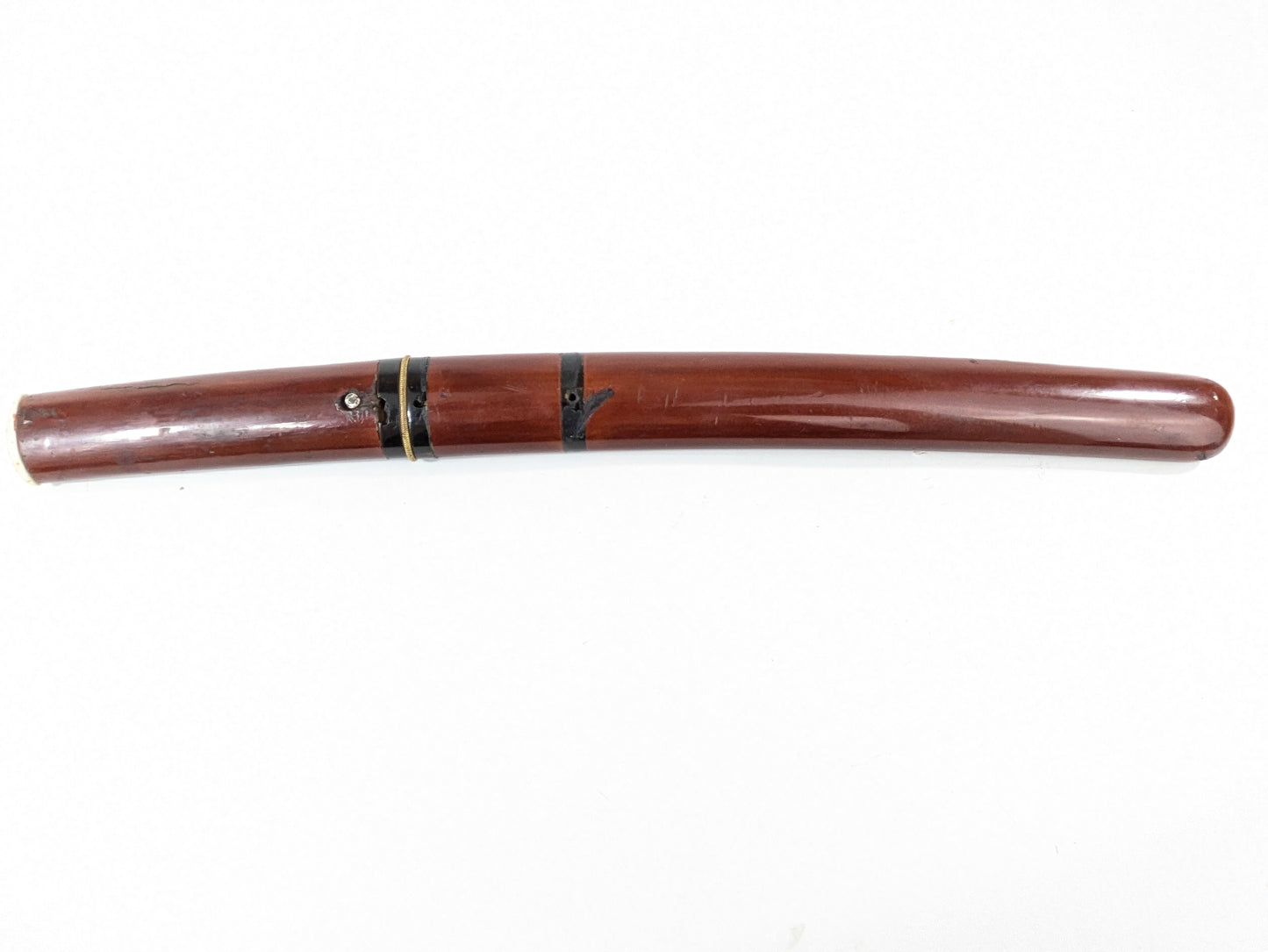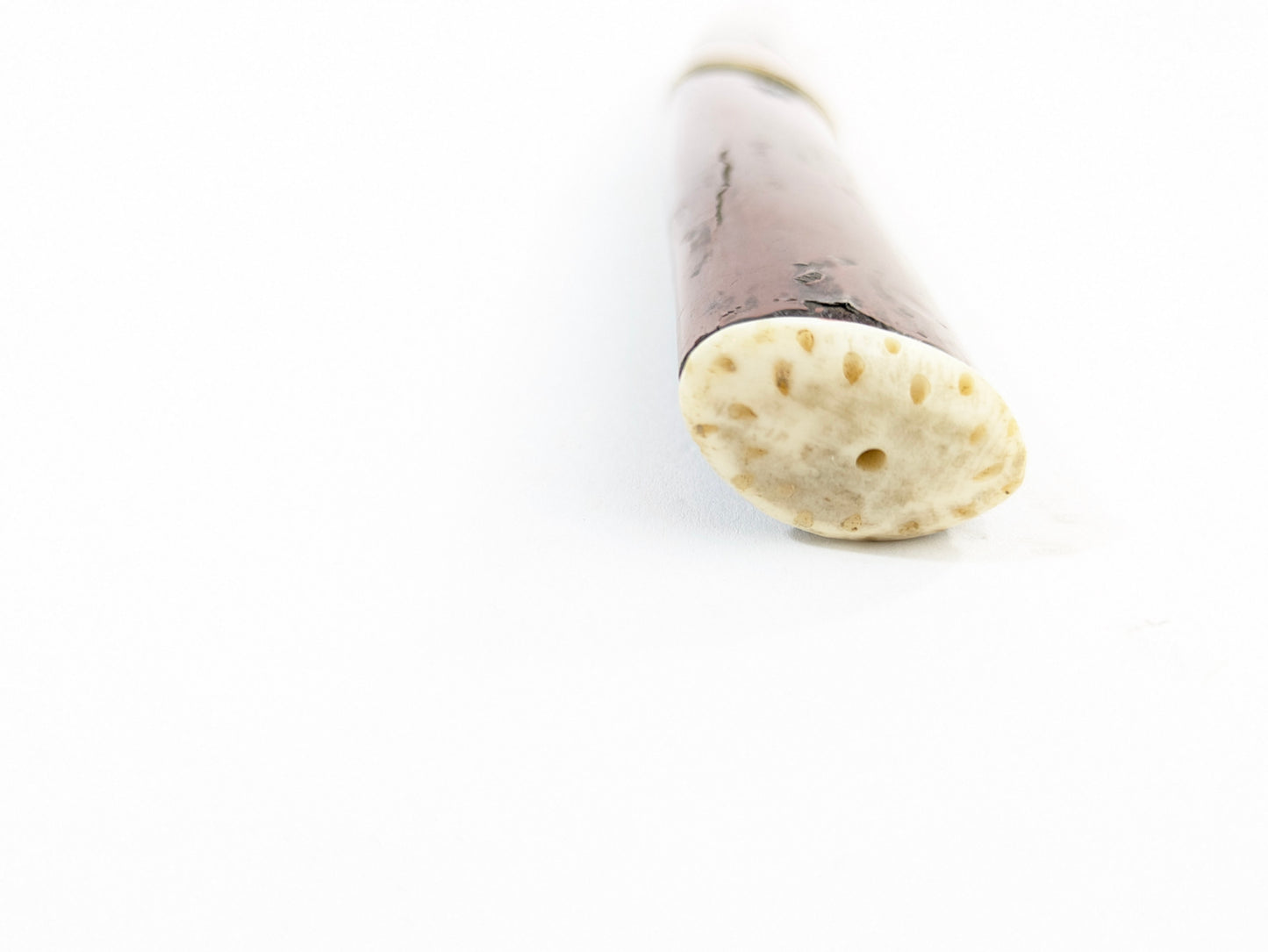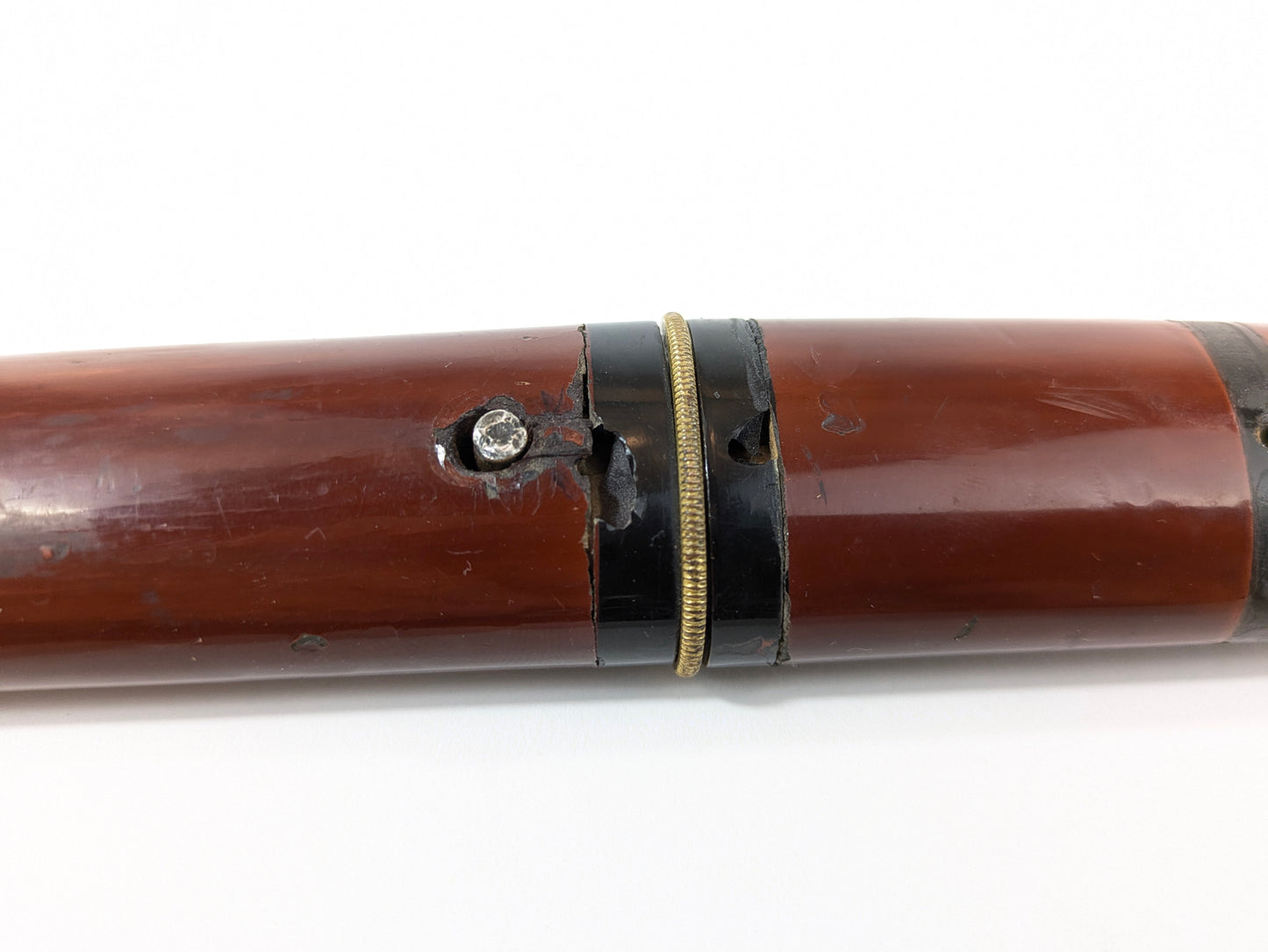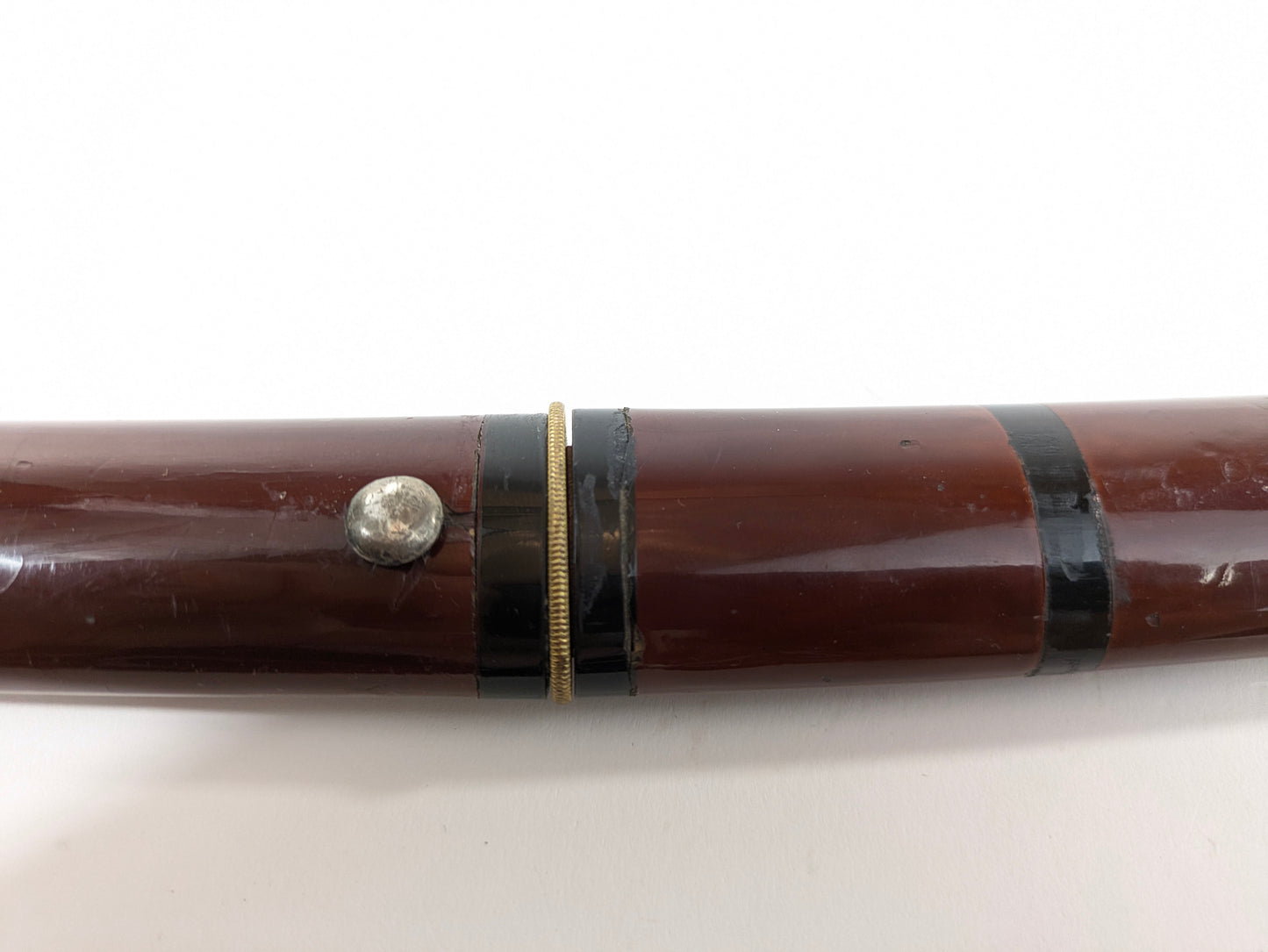Japanese Edo Period or Earlier Signed “Kagemitsu” Tanto Samurai Sword in Red Sheath LS#101
Japanese Edo Period or Earlier Signed “Kagemitsu” Tanto Samurai Sword in Red Sheath LS#101
Couldn't load pickup availability
Signed Japanese Tantō — 景光 (Kagemitsu)
Muromachi period or later
A Japanese short sword (tantō) signed 景光 (Kagemitsu), attributed to a later smith of the Osafune Bizen tradition. The blade is of typical form with a straight suguha hamon, differing from the flamboyant chōji-midare of the Kamakura master. The signature is boldly placed on the tang (nakago), though carved in a simpler hand, pointing toward Muromachi or Edo manufacture rather than the great early Kagemitsu.
The sword illustrates the continuity of Japanese smithing across generations. For centuries, the name “Kagemitsu” carried the prestige of one of Bizen’s greatest lineages, and later smiths adopted it in homage or as successors. This piece shows those later traditions: a practical and restrained blade, built for use rather than ornate display.
Mountings reveal its layered history. One saya is a plain lacquer scabbard, once elegant but now cracked and repaired, suggesting long domestic use. The second is a complete WWII officer’s koshirae: ray skin handle with cord wrapping, decorated brass fittings, and military-style mountings. This remounting indicates that the sword, centuries old, was pressed into service during Japan’s modern conflicts — a common practice, as older family blades were carried by officers in the field.
The condition of the blade is consistent with its age and service. The polish is worn, with surface scratches visible, but the form and hamon remain intact. The sword has not been modernized beyond its military fittings, preserving its character as a reused antique weapon.
For the collector, this tantō is significant as an example of how Japanese swords transcended single eras of use. It carries the signature of Kagemitsu, evoking the Osafune tradition, and bears witness to both medieval craft and 20th-century adaptation. While not the work of the Kamakura master, it represents the living history of the name and its enduring role in Japanese arms.
Details
-
Smith/Signature: 景光 (Kagemitsu)
-
Date/Period: Muromachi or later (14th–16th c. blade; remounted 20th century)
-
Medium: Steel blade; lacquer, silk cord, ray skin, brass
-
Blade Length: approx. 8in. 15in. Total Length
-
Mountings: One lacquered saya (repaired); one WWII officer koshirae
-
Condition: Blade with scratches and wear to polish; mountings show age and repair
LS#101
Item Card
Tantō signed “Kagemitsu” (景光)
Japan, Muromachi period or later
Steel blade; lacquered wood, brass, ray skin
Blade length: approx. ___ in.
Provenance: Collection of Len Sorese
LS#101
Museum Card
Tantō signed “Kagemitsu” (景光)
Japan, Muromachi period or later (14th–16th century blade; 20th century remounts)
Steel, lacquer, silk, ray skin, brass
Blade length: approx. ___ in.
This short sword bears the signature of Kagemitsu (景光), a name belonging to the famed Osafune lineage of Bizen province. The reserved suguha hamon and simplified execution of the mei suggest it comes from a later smith using the name rather than the famous Kamakura master. The sword has been remounted multiple times, with one lacquered scabbard surviving in damaged condition and a second set of 20th-century officer mounts indicating its use in the Second World War. The piece exemplifies the continued reuse and transmission of Japanese blades across centuries of history.
LS#101
Tanto in Lacquered Koshirae — Signed “Harumitsu” (春光)
This tanto features a blade signed 春光 (Harumitsu/Shunkō), mounted in a simple red-brown lacquer saya with black lacquer accents and horn/bone fittings. The blade, approximately [insert length here], is housed in a plain wooden tsuka with brass habaki. The style of the mounts suggests late Edo to early Meiji period civilian use, when tanto were worn more as status or utility blades than for battlefield service.

